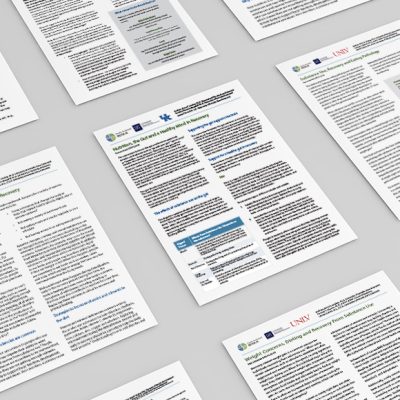
The relationship between eating pathology and substance use is well established, with up to 50% of people with eating disorders using alcohol or drugs and up to 35% of those dependent on substances having eating disorders. The co-occurrence of these issues makes it difficult to determine which is the primary problem, and subclinical eating pathology often emerges during recovery. Treating substance use, eating pathology, and body image issues simultaneously is often necessary. Recovery can disrupt internal hunger cues, leading to increased appetite, overeating, and weight gain due to biochemical changes.

Body dissatisfaction, defined as having negative thoughts or feelings about one's physical appearance, arises from a perceived gap between one's actual and ideal body image. Influenced by cultural values and appearance ideals, individuals may internalize these ideals, particularly the thin ideal in Western cultures, leading to behaviors aimed at achieving these standards. This thin-ideal internalization often results in body dissatisfaction, driving dieting and extreme measures to improve appearance. Research indicates that body dissatisfaction is a significant predictor of dieting behavior, negative effects, and the development and maintenance of eating disorders, making it one of the strongest predictors of eating pathology.

Recovery-related weight gain is common among individuals recovering from substance use due to suppressed appetite and disrupted metabolism during substance use, leading to significant weight loss. After stopping drug use, weight gain can occur due to impaired nutrient absorption and distorted hunger cues, with cravings for sweet foods often resulting in overeating. Fad diets and rigid dieting behaviors, used as self-medication to prevent weight gain, can be harmful and lead to further weight cycles and a higher risk of substance use recurrence. Chronic dieting, especially among females focused on appearance, can perpetuate weight issues and is exacerbated by dangerous practices like restrictive eating, skipping meals, and misuse of diet supplements and energy products.

Vitamins and minerals, or micronutrients, are essential for healthy development, disease prevention, metabolism, and overall well-being, particularly during recovery from substance use. Unlike macronutrients, which provide energy, micronutrients are needed in smaller amounts from various foods to support critical body functions, similar to how oil and transmission fluid help a car run smoothly. Micronutrients are crucial for organ system stability, bone health, and mental health, with deficiencies linked to issues like depression, poor attention span, and sleep difficulties. Key micronutrients for mental health include iron, folate, vitamin B6, and vitamin B12, which are involved in producing serotonin and dopamine.

The connection between the gut and brain, often referred to as the gut-brain axis, highlights the gut's role as a "second brain" due to its numerous neurons that communicate with the brain. Gut bacteria, or microbes, significantly influence nutrient absorption and usage, with over a trillion microbes inhabiting a healthy gut. This connection impacts anxiety, depression, hunger, satiety, and cravings, which are crucial factors in substance use recovery. Understanding how substance use affects the gut and how proper nutrition supports gut health is essential for effective recovery and overall well-being

Macronutrients—carbohydrates, fats, and proteins—are vital for body development, maintenance, disease prevention, metabolism, and overall health, especially during recovery. They serve as the body's primary fuel source, providing calories needed for functioning. Adequate intake of macronutrients supports physical energy and mental health, improving nutritional status and treatment effectiveness, while reducing cravings and preventing substance use recurrence. Insufficient intake can lead to depression, anxiety, and low energy, potentially triggering substance use or relapse.